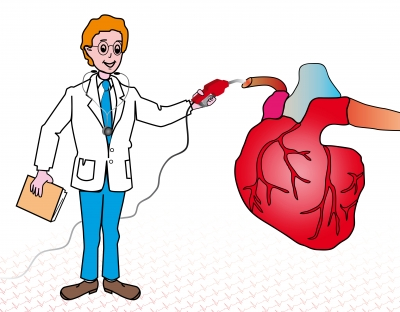Low Survival Rates For Cardiac Arrests Above The 3rd floor In High Rise Buildings
In compliance with the FTC guidelines, please assume the following about all links, posts, photos and other material on this website: (...)
Those who live in high-rise buildings had better survival rates from heart attacks if they were living on the first few floors.
According to a study published in the Canadian Medical Association Journal (CMAJ), residents who live in high-rise buildings had better survival rates from cardiac arrests if they were living on the first few floors, whereas survival was already negligible for this living above the 16th floor.
The study was led by Ian Drennan, a paramedic with York Region Paramedic Services, and a researcher with Rescu, Li Ka Shing Knowledge Institute, St. Michael's Hospital, Toronto.
As the number of high-rise buildings continues to increase and as population density rises in major urban centers, it is important to determine the effect of delays to patient care in high-rise buildings on survival after cardiac arrest, he writes.
Building Floors and Survival Rates
Simply put, the further a patient who is experiencing cardiac arrest is from the first floor, the lower is the survival rate. Out of 8216 people who had cardiac arrests and were living in private residences and were treated by responders from 911, around 3.8 percent survived who were to be discharged from the hospital. From the 5993 or 73 percent of the people living below the 3rd floor, 252 or 4.2 percent were able to survive having a cardiac arrest, whereas only 48 or 2.6 percent of the people living above the 3rd floor were able to survive. The researchers also analyzed the survival rate per floor, and it was found that only 0.9 percent of resident were able to survive after cardiac arrest on the 16th floor, and there were even no survivors above the 25th floor. It was also important to note that the use of the automated external defibrillators or AED, was quite low.
The research also looked at the interval between when an emergency vehicle arrives and when 911-responders are able to reach a patient experiencing cardiac arrest. The authors say that the total response time would be quite dependent on how long the responders reach the patients upon arrival at the scene, as traffic patterns do not usually change. Previous studies have only measured the interval between the call to 911 and the arrival of the vehicle to the scene, but not the time to actually reach the patient.
The researchers provide several solutions so that 911-responders might be able to improve time on patient contact, such as access to elevators for emergency service that has no public interference, similar to access of firefighters, as well as advance emergency alerts to building staff before the responders arrive, and also better placement of AEDs so as to give more access for the usage of bystanders.
Other related solutions were to provide CPR/AED training for people living in high-rise residences, a national online registry that will be used for public-access defibrillators for first-responders, and the use of smartphones to alert volunteer first responders for those experiencing cardiac arrest.
Associate Professor Marcus Eng Hock Ong, from the Department of Emergency Medicine in Singapore General Hospital says that Singapore has a multipronged approach to address high-rise residential out-of-hospital cardiac arrests. A large public campaign is currently underway to enrol residents' committees as first responders and to train one million people over the next five years.”









